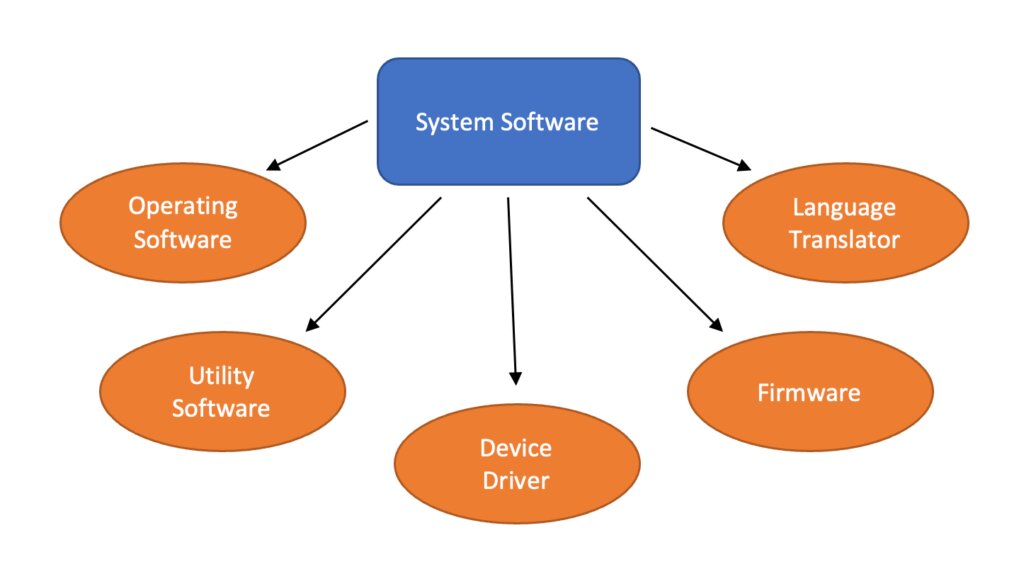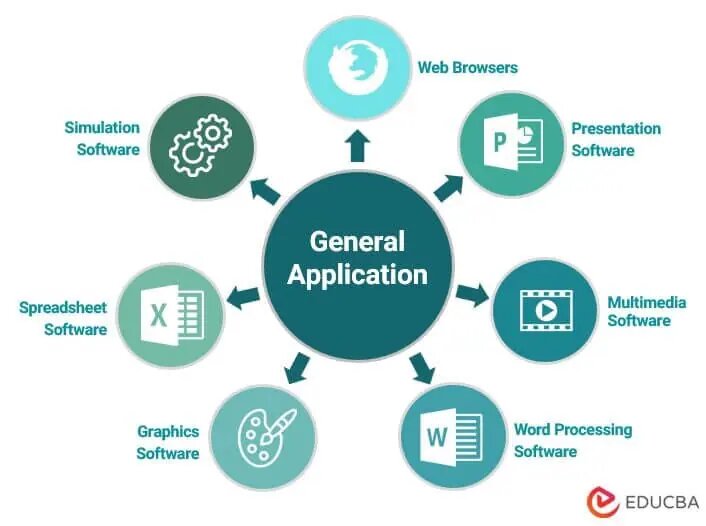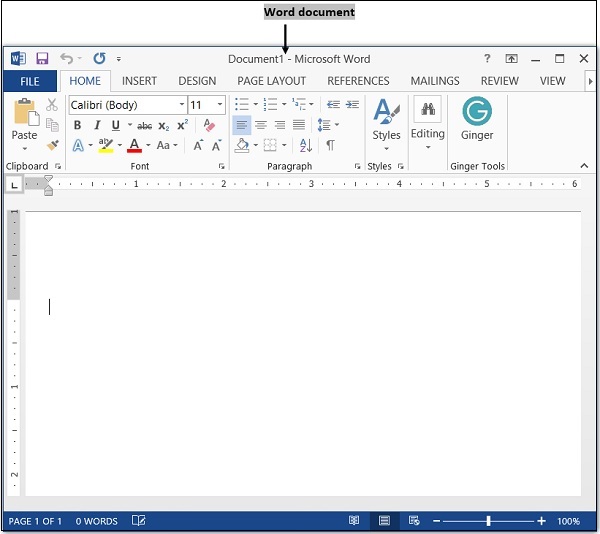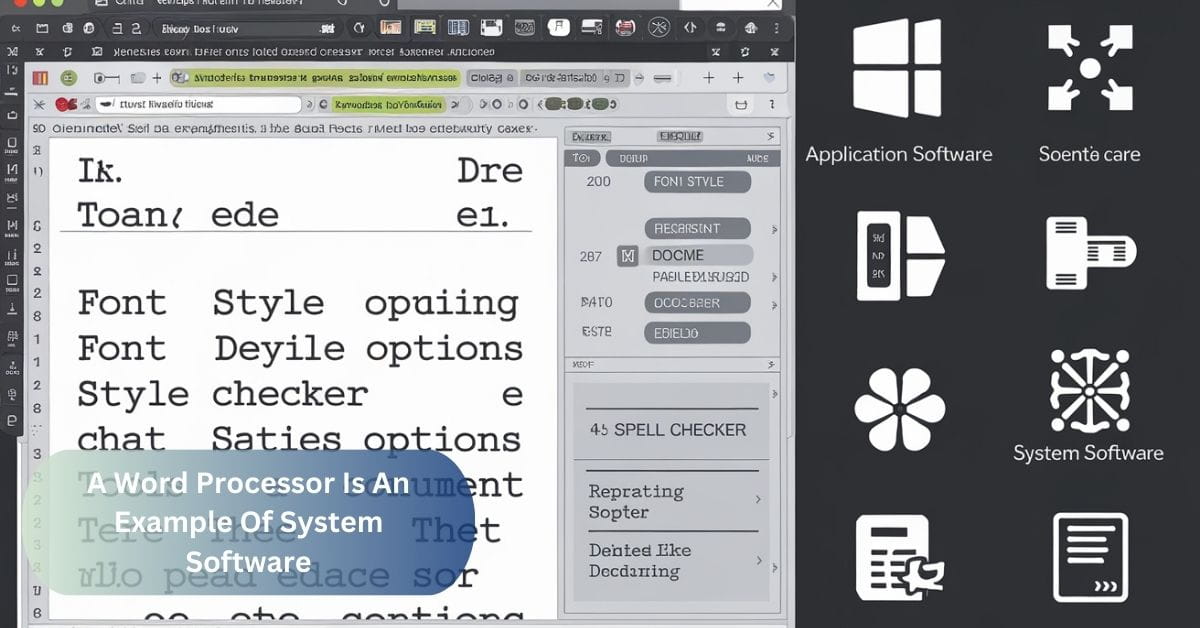I remember the first time I typed a story on a word processor—it felt like magic, as if my words were dancing onto the screen. It wasn’t just a tool; it was a blank canvas where my ideas took shape and came alive.
One example of system software is a word processor. Word processors are application software for producing and editing documents; they are not system software. While application software assists with certain activities, system software manages the machine.
Introduction: A Word Processor Is An Example Of System Software
The statement “A Word Processor Is An Example Of System Software ” is incorrect. A word processor is a type of application software. It provides tools to format text, check spelling, and add images, making it easier for users to create professional-looking files. In contrast, system software includes programs that manage the computer’s essential functions, like the operating system.
Unlike system software, a word processor doesn’t interact directly with the hardware; instead, it relies on system software to function properly. This means that while word processors are powerful for document creation, they need the system software to operate effectively.
Understanding System Software

1. Operating Systems:
Operating systems are the backbone of a computer, managing both hardware and software resources. They allow users to interact with the computer through a user-friendly interface. Without them, running applications and tasks would be impossible.
2. Device Drivers:
Device drivers are programs that help the computer communicate with hardware like printers, keyboards, or graphics cards. They act as translators, making sure the system understands the commands sent to the device. Without drivers, connected hardware wouldn’t function properly.
3. Utility Programs:
Utility programs are essential tools that keep a computer running well by performing tasks such as organizing files, checking for viruses, and backing up data. They work quietly in the background, ensuring that everything operates efficiently and securely.
Defining Application Software
Application software refers to programs designed for specific tasks, like writing documents or browsing the internet. It runs on top of system software to help users complete everyday activities.
1. Role of Application Software:
Application software enables users to perform specific tasks, from creating presentations to editing photos. It acts as a bridge between the user and the computer’s capabilities. Its role is to make complex functions accessible and useful for everyday needs.
2. Types of Application Software:

- Word Processors: Software like Microsoft Word allows users to create, edit, and format text documents easily.
- Spreadsheets: Programs such as Excel help manage and analyze data using tables, graphs, and formulas.
- Presentation Software: Tools like PowerPoint enable users to create visual presentations with slides and multimedia.
- Graphic Design Software: Applications like Adobe Photoshop allow users to create and edit images and graphics creatively.
- Web Browsers: Programs such as Chrome and Firefox facilitate browsing the internet and accessing online content seamlessly.
What Is A Word Processor
A word processor is a software application used for creating and editing text documents. It offers features like formatting, spell check, and the ability to insert images, making writing more efficient and user-friendly.
1. Features of Word Processors:
- Text Formatting: Users can change font styles, sizes, and colors to enhance the document’s appearance.
- Spell and Grammar Check: Built-in tools automatically identify and suggest corrections for spelling and grammatical errors.
- Page Layout Options: Customization of margins, spacing, and alignment allows for personalized document designs.
- Insert Images and Objects: Users can add pictures, charts, and tables to make documents more visually appealing.
- Collaboration Tools: Features like comments and track changes enable multiple users to work on a document simultaneously.
2. Advantages And Disadvantages Of Using A Word Processor:
Advantages:
- Ease of Editing: Word processors allow users to easily modify text, including cutting, copying, and pasting, which saves time.
- Formatting Options: They provide a variety of formatting tools, enabling users to create visually appealing documents with styles, fonts, and layouts.
- Spell Check and Grammar Tools: Built-in checks help catch mistakes, improving the overall quality of writing without needing external resources.
Disadvantages:
- Dependency on Technology: Relying heavily on word processors can reduce basic writing skills and the ability to produce documents without assistance.
- Software Glitches: Technical issues or crashes can lead to lost work if files aren’t saved regularly, causing frustration.
- Distraction Potential: Features like internet access and various tools can distract users, leading to reduced productivity while writing.
Why A Word Processor Is Not System Software

1. Purpose and Functionality:
The purpose of a word processor is to assist users in creating, editing, and formatting text documents efficiently. Its functionality includes features like spell check, customizable fonts, and the ability to insert images, making it a versatile tool for both professional and personal writing tasks.
2. Interaction with Users:
Interaction with users in a word processor is designed to be intuitive and user-friendly. Features like toolbars, menus, and shortcuts make it easy for users to navigate and perform tasks efficiently, enhancing the overall writing experience.
3. Dependency:
Dependency on word processors can lead to a decline in traditional writing skills, as users rely more on technology for spelling and grammar checks. This reliance may hinder one’s ability to write effectively without digital assistance, impacting overall communication skills.
Key Differences Between System And Application Software
1. Importance of Distinguishing Between the Two:
Distinguishing between application software and system software is essential for understanding how computers function. This knowledge helps users choose the right tools for their tasks and ensures they effectively utilize their devices.
2. Impact on Computer Performance:
- Resource Usage: Word processors can consume a significant amount of memory and processing power, especially with large documents or advanced features, which may slow down the computer.
- Background Processes: These applications often run multiple background processes, which can affect overall system performance and lead to slower response times.
- File Size: Saving documents with high-resolution images or complex formatting can increase file size, impacting storage space and potentially slowing down file access.
3. Examples in Real-Life Scenarios:

- Student Essays: Students use word processors to write and format essays, making it easier to revise and share their work with teachers.
- Business Reports: Professionals create detailed reports and presentations using word processors, allowing for organized layouts and easy updates.
- Personal Letters: Individuals can craft personalized letters or invitations with various fonts and styles, enhancing the overall presentation and readability.
FAQ’s
1. Are word processors only for text documents?
No, word processors can also handle images, tables, and charts, allowing users to create more complex documents like reports and brochures.
2. Can I collaborate with others using a word processor?
Yes, many modern word processors, like Google Docs, allow multiple users to work on the same document simultaneously and leave comments.
3. Do word processors have templates?
Yes, most word processors offer a variety of templates for letters, resumes, and reports, making it easier to start a project.
4. Is it possible for me to save my work in various formats?
Absolutely! Word processors usually allow you to save documents in various formats, including PDF, DOCX, and TXT, for compatibility with different platforms.
5. Is it possible to access my documents from different devices?
Yes, if you use cloud-based word processors like Google Docs, you can access your documents from any device with internet access.
Conclusion:
The statement “a word processor is an example of system software” is not accurate. Word processors are application software designed for creating and editing documents, while system software manages a computer’s core operations.
Understanding this distinction helps users appreciate the roles of different types of software and utilize them effectively for their tasks.

